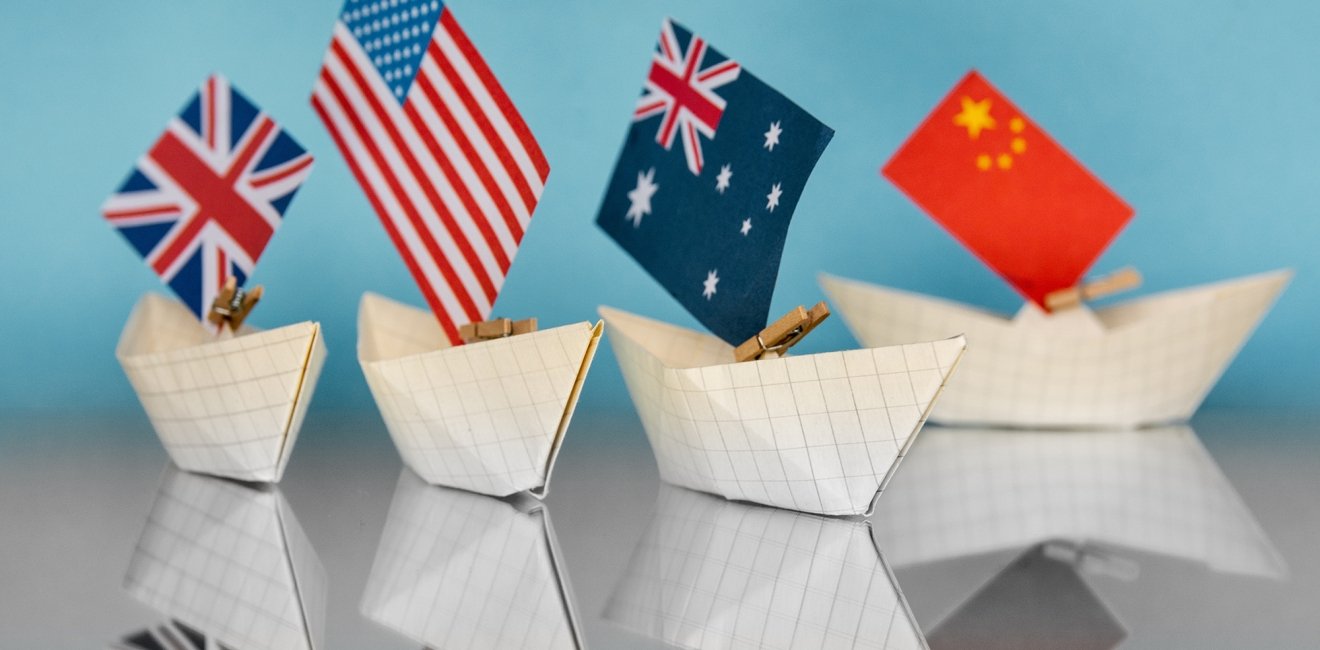
A blog of the Indo-Pacific Program
The U.S. and British agreement to supply technologies that would allow Australia to build at least eight nuclear- powered submarines came as a surprise, to say the least, and sent geopolitical shock waves across both Asia and Europe. Most of the headlines focused on France, which had a prior agreement to supply Australia with diesel/electric submarines — a deal worth $66 billion. Australia cancelled that deal in favor of the new one — and the French are apoplectic. Paris took the almost unprecedented step of recalling its ambassadors from both Washington and Canberra as the Foreign Minister declared that France had suffered a “stab in the back.” A grand gala planned to celebrate the origins of the U.S.-French alliance was abruptly cancelled. To many other Europeans, the new initiative seemed rather like the Biden administration’s abrupt withdrawal from Afghanistan without seriously consulting its NATO partners. At the very least, U.S. diplomats have many months of work ahead of them to try to repair relations and assuage raw feelings across much of Europe, but particularly in Paris.
Still, the trilateral Australia, UK, and United States (AUKUS) agreement is strategically sound. It also carries risks, particularly for Australia. In Canberra, the new agreement is being rightly described as one that will shape the future of Australia for generations. Australia came into existence in the late 1700s as a British colonial outpost on the edge of Asia. In subsequent decades, Australians understandably looked to Britain for protection in a region not known for peace and tranquility. With the outbreak of World War II, Britain was fighting for its life against Nazi Germany and was in no position to aid Australia as the forces of imperial Japan swept south after Pearl Harbor. America was the only nation capable of blocking Japan’s advance — and did so in desperate naval battles in the Coral Sea and at Midway. Australia joined the U.S. war effort and Aussie “Diggers” and U.S. Marines fought their way across New Guinea and South Pacific islands under some of the most harrowing conditions in the history of warfare. A bond was formed that went well beyond calculations of national interest.
In the decades since, the partnership between Australia and the United States has been about as close as an alliance can be.
With the end of the war, East Asia quickly pivoted toward a new round of conflict beginning with the civil war in China, then the Korean War, followed by communist insurgencies across all of Southeast Asia. Canberra saw these early cold war conflicts as a direct threat to Australian security and insisted on a new formal defense alliance with Washington. The ANZUS treaty was signed in 1951. In the decades since, the partnership between Australia and the United States has been about as close as an alliance can be. U.S. and Australian forces conduct joint activities constantly; Australia buys U.S. military equipment; the two governments jointly staff a huge intelligence facility and satellite ground station at a remote site in the Australian outback; soldiers from both countries have fought side-by-side in Korea, Afghanistan and Iraq; and Australian military officers can be found in every nook and cranny of the Pentagon. Anyone who has watched service men and women from the two countries interact is struck by how easy and natural that interaction is — “best mates” in a nanosecond.
For Canberra, this close collaboration has come with a nagging question. Just how dependent should Australia become on U.S. protection? The benefits are obvious, but there are also costs. First, as Australian forces become effectively embedded in U.S. formations, Australia loses strategic autonomy. Truly independent military initiatives on any scale become impossible if America objects. Second, close ties with the United States inevitably create tensions with Australia’s most important market — China. As China’s economic and military strength have grown, some influential voices in Australia have called for Canberra to recognize the shifting balance of regional power and distance itself from the United States and draw closer to China. Australia has seemed to face a looming choice between its economic interests (China) and its security interests (United States).
Beijing saw the same thing and responded with a remarkably clumsy attempt to coerce Canberra into choosing China. That campaign involved angry official criticism of Australian press coverage of the plight of Uighurs and Tibetans in China; efforts to use Chinese students in Australia as advocates for Chinese policy; attempts to buy, or effectively bribe, selected Australian MP’s; aggressive efforts to buy control of key strategic industries in Australia; the arbitrary arrest of an Australian journalist based in China; and an incendiary reaction to Australian government recommendations for an expert international inquiry into the origins of the COVID pandemic. Chinese efforts to “teach Australia a lesson” have included slapping new tariffs on exports of Australian wine, coal, timber, cotton and other products to China.
As one Australian official commented...Australia has “bet the house” on American resolve to stay in Asia and on its ability to do so.
There is a pugnacious streak in Australian culture and it has been no surprise to people who know the country well that all this Chinese pressure and attempted intimidation has backfired spectacularly — one major result being the nuclear submarine agreement. By committing to that deal, Australia has firmly aligned itself with U.S. efforts to block China’s ambitions to dominate Asia. As one Australian official commented, using a gambling analogy, Australia has “bet the house” on American resolve to stay in Asia and on its ability to do so. Not surprisingly, Beijing is not happy. A semi-official mouthpiece of the government declared that “America has lost its mind” supplying Australia with such a military capability.
In Canberra, they beg to differ. That said, there is a clear-eyed awareness of just how high the stakes are. The China challenge to the prevailing geopolitical order in East Asia is increasingly militarized. The Chinese navy is now the world’s largest. China has two deployed aircraft carriers and a nuclear carrier under construction. Meanwhile, China has built a network of new military bases out in the South China Sea. If the Chinese navy has a weakness, it is in anti-submarine warfare. By investing in the construction of advanced nuclear attack submarines, Australia is effectively putting itself at the center of this emerging militarized contest for the future of maritime Asia.
The nuclear submarine deal received both implicit and explicit support a week later when the leaders of the “Quad” [U.S., Japan, India, and Australia] met, in person, at the White House. It was particularly noteworthy that Prime Minister Modi, with India’s long, hallowed tradition of non-alignment, had nothing critical to say about AUKUS. Prime Minister Suga of Japan, with its own history of strategic reticence, went further and explicitly endorsed AUKUS’ “important role for the peace and stability of the Indo-Pacific region.”
Fasten your seatbelts; the geopolitical winds of maritime Asia are starting to blow.
The views expressed are the author's alone, and do not represent the views of the U.S. Government or the Wilson Center. Copyright 2020, Asia Program. All rights reserved.
Follow the Asia Program on Twitter @AsiaProgram. or join us on Facebook.
Author

Adjunct Professor, Johns Hopkins University; Former Professor of National Security Policy, National War College and Deputy Staff Director, Senate Select Committee on Intelligence

Indo-Pacific Program
The Indo-Pacific Program promotes policy debate and intellectual discussions on US interests in the Asia-Pacific as well as political, economic, security, and social issues relating to the world’s most populous and economically dynamic region. Read more





